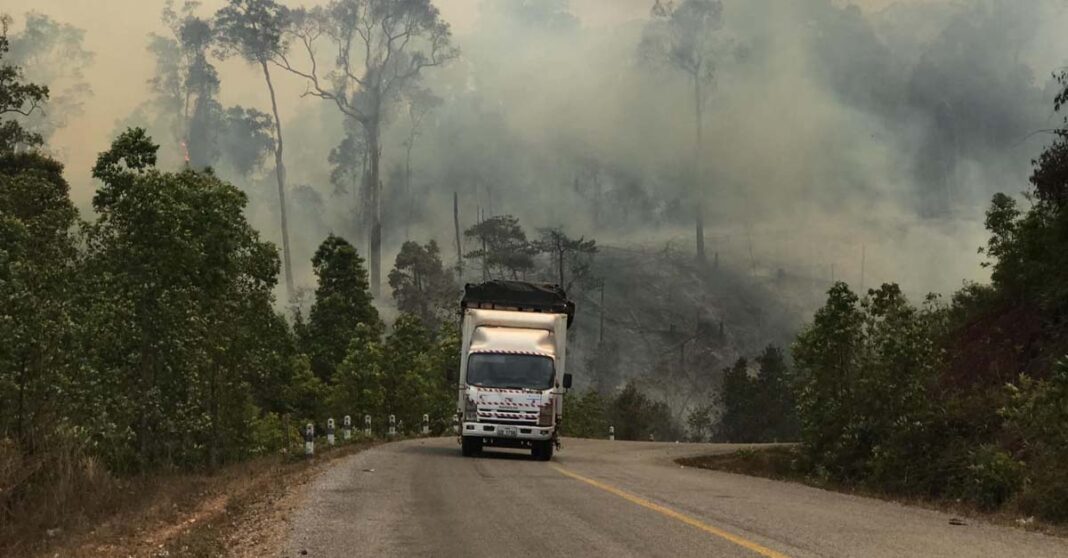Farmers are encroaching on national parks and protected forests in Laos, burning and clearing large areas to make room for cassava crops.
The demand for cassava has seen it become the most profitable agricultural product in Laos, as demonstrated by the country’s February trade figures: cassava was the leading export item, with figures totaling USD 85 million.
Laos exports most of its cassava to Thailand and Vietnam, where it is used in the production of Monosodium glutamate (MSG). China, meanwhile, imports cassava from Laos to be used in tapioca flour production, according to an official at the Lao Trade Portal.
Thailand has even designated the province of Nakhon Ratchasima, located in the country’s northeast, as its cassava processing hub. As a result, cassava from Laos has become more desirable than ever for export to Thailand.
This demand has led to encroachment on protected forests and national parks in Laos as farmers look for land to expand their cassava production, with reports of slash-and-burn agricultural practices becoming routine during the dry season.
Widespread burning to clear land for cassava plantations has caused a massive haze of toxic smoke to cover the skies in many provinces of Laos, affecting the health of residents and negatively impacting tourism.
Tourists traveling through Khammouane Province posted images of scorching fires burning through the Nakai-Nam Theun National Park on 16 March.
“I tried to ride from the Natan Valley to the Kong Lor caves on the other side but turned back due to the smoke after driving for four kilometers. Besides the fire, lots and lots of trees have been cut down as well,” one of the tourists told Laotian Times.
“It is easy to identify the protected area, as the whole stretch left of the road is lined with signs prohibiting cutting down trees,” the tourists added.
Tourists traveling through Khammouane Province last week captured video of a fire in an area they believe was the Nakai-Nam Theun National Park. pic.twitter.com/gdhXzL8vbn
— The Laotian Times (@LaotianTimes) March 24, 2023
But Mr. Soukhun Inthanuhuk, Deputy Head of the Provincial Department of Agriculture and Forestry in Khammamoue Province, claims that the fire occurred on a resident’s private property.
“The fire was not inside the park, but on private property. We are concerned of course that their burning could spark a wildfire, but as the area is privately owned, we lack the authority to manage it,” Mr. Soukhun said.
Experts have also warned that burning and logging could have a devastating impact on the ecosystem, leading to soil erosion, loss of biodiversity, and increased carbon emissions.
“Villagers living on the outskirts of the national parks and protected forests are prone to encroach on the land to grow cassava and other high-value crops to earn a living,” says Mr. Nasar Hayat, FAO Representative to Laos.
“These practices jeopardize the objective of the Government of Laos to achieve 70% forest cover by 2035, even though achieving this target has become even more important due to the multiple climate events, such as droughts and floods,” he adds.



